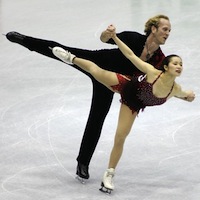

Although women currently enjoy an unprecedented level of prominence in the world of sports, regular sports viewing is still at odds with accepted gender roles in the eyes of many women, according to a new study. Some women may also avoid watching sports that challenge traditional beliefs about gender. The report, conducted by researchers from the University of Tennessee and Pennsylvania State University, was published in Communication, Culture & Critique.
Four decades ago, federal law began mandating that schools develop sports programs for girls. Before Title IX, schools focused almost exclusively on boys’ sports, and girls sports received little attention and even less funding. Young women raised with the opportunity to participate in sports have gone on to play on college teams and, more recently, on professional women’s teams. In spite of this, research shows that, when it comes to team sports, women just don’t watch the way men do.
However, women have historically made up a significant portion of the viewing audience for the Olympic games. Researchers Erin Whiteside and Marie Hardin sought to find out which summer Olympic sports women are most likely to watch. They also wanted to find out what it is about the Olympics that appeals to women who might not ordinarily watch sports.
The investigators interviewed 19 women between the ages of 26 and 43. They divided the women into three groups and spoke with the groups for 90 minutes each. Most of the women were middle-class and were married with multiple children. None of the women who participated in the study watched sports on a regular basis.
Whiteside and Hardin discovered that the women in their focus groups preferred Olympic sports over sports with ongoing seasons because they could be watched in one sitting and required no long-term commitment of time, as opposed to sports that must be followed closely over a period of months. More specifically, the participants liked watching Olympic events because watching them did not interfere with domestic chores.
Traditional gender roles not only dictated when and how long the women watched sports, but also impacted which events they chose to watch. Overall the women preferred to watch events that were commonly participated in by women prior to the implementation of Title IX, such as figure skating, gymnastics and swimming events. These sports are often viewed as feminine, or at least as more suitable for women than such events as weight lifting or basketball.
The focus-group members expressed little enthusiasm for watching sports in general and were particularly uninterested in women’s sports that showcase strength and athletic skills that seem to contradict traditional notions regarding the capabilities of women. However, they did take an interest in more traditionally feminine sports presented in short vignettes with a distinct beginning and end, characteristics that tend to fit Olympic events. Timing also had an impact on the women’s sports viewing habits, with many of the women basing the choice of which events to watch at least partially on how the events fit into their schedules.
Leave a Reply